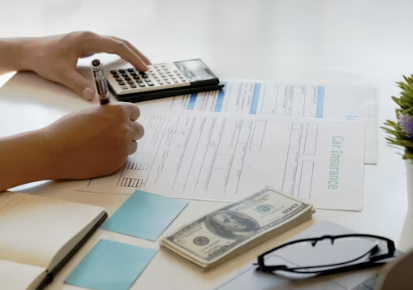Are you ready for this massive Social Security shake-up? Here’s what you must do before September 30
- Replies 1
Big changes are coming for millions who depend on their monthly Social Security payments.
In less than a month, a major shift will take effect that will change the way benefits are delivered.
This update is part of a broader government effort to improve security and efficiency.
If you still receive a paper check, you’ll want to pay close attention so your payments don’t get delayed.
Let’s start with the headline: after September 30, 2025, the Social Security Administration (SSA) will stop sending paper checks for Social Security, SSI, and SSDI payments.
Instead, all federal benefit payments—including tax refunds—will be made electronically.
This isn’t just a minor tweak; it’s a major modernization effort, designed to cut down on fraud, theft, and the headaches of lost or delayed mail.
But why the change? According to government data, paper checks are 16 times more likely to be reported stolen or lost than electronic payments.
They’re also more likely to be tampered with or returned as undeliverable. The move to electronic payments is expected to save money, reduce risk, and get your benefits to you faster and more securely.
This shift was made official by an executive order signed on March 25, 2025, and now the clock is ticking.
If you haven’t already switched to direct deposit or another approved electronic payment method, you need to act—fast.
Also read: 7 sneaky scams draining bank accounts—how to protect yourself now
These must be approved by the US Treasury, and you’ll need to provide documentation. If you think you might qualify, contact the SSA or the Treasury as soon as possible.
Also read: When will your September 2025 SNAP payment arrive? Here’s what to know
How It Fits Into a Bigger Picture
This isn’t the only change the SSA has made in 2025. Earlier this year, the agency sent out backpay to millions after repealing the Government Pension Offset (GPO) and Windfall Elimination Provision (WEP) policies.
The SSA has also updated its overpayment policies, which now allow the agency to withhold up to 50% of future payments (down from a proposed 100%) if you’ve been overpaid.
Read next: Could monthly payments like this change how Americans live?

Are you already using direct deposit, or are you one of the folks who still prefer a paper check? Do you have questions or concerns about the new system? Maybe you’ve got tips for others making the switch.
In less than a month, a major shift will take effect that will change the way benefits are delivered.
This update is part of a broader government effort to improve security and efficiency.
If you still receive a paper check, you’ll want to pay close attention so your payments don’t get delayed.
Let’s start with the headline: after September 30, 2025, the Social Security Administration (SSA) will stop sending paper checks for Social Security, SSI, and SSDI payments.
Instead, all federal benefit payments—including tax refunds—will be made electronically.
This isn’t just a minor tweak; it’s a major modernization effort, designed to cut down on fraud, theft, and the headaches of lost or delayed mail.
But why the change? According to government data, paper checks are 16 times more likely to be reported stolen or lost than electronic payments.
They’re also more likely to be tampered with or returned as undeliverable. The move to electronic payments is expected to save money, reduce risk, and get your benefits to you faster and more securely.
This shift was made official by an executive order signed on March 25, 2025, and now the clock is ticking.
If you haven’t already switched to direct deposit or another approved electronic payment method, you need to act—fast.
What You Need to Do Before September 30
If you’re still receiving your Social Security or other federal benefits by paper check, you must choose an electronic payment option before the deadline. Here are your main choices:1. Direct Deposit to a Bank or Credit Union Account
The gold standard for most people. Your benefits go straight into your checking or savings account, ready to use on the day they’re due.2. Direct Express Prepaid Debit Card
Don’t have a bank account? No problem. The Direct Express card is a government-backed prepaid debit card. No credit check is required, and your benefits are loaded onto the card each month. You can use it just like any other debit card for purchases, bill payments, or ATM withdrawals.3. Other Approved Electronic Payment Methods
The government is also allowing payments to digital wallets and other real-time transfer services, though these are less common for Social Security recipients.How to Make the Switch
- Online: Log in to your account at the SSA website and select “Direct Deposit.” Follow the prompts to enter your bank or card information.
- By Phone: Call the SSA at 1-800-772-1213 for help setting up your payment method.
- In Person: Visit your local Social Security office for assistance.
- Go Direct Website: The Go Direct program (www.godirect.gov) is a government resource to help you enroll in direct deposit or the Direct Express card. You can even download and mail in a paper form if you prefer.
Also read: 7 sneaky scams draining bank accounts—how to protect yourself now
What Happens If You Miss the Deadline?
If you don’t set up an electronic payment method by September 30, your benefits could be delayed until you do. That’s a risk no one wants to take, especially when bills and groceries can’t wait.Are There Any Exceptions?
Yes, but they’re rare. If you have no access to banking or electronic payment tools, or if you’re experiencing extreme financial hardship, you may qualify for an exception.These must be approved by the US Treasury, and you’ll need to provide documentation. If you think you might qualify, contact the SSA or the Treasury as soon as possible.
Also read: When will your September 2025 SNAP payment arrive? Here’s what to know
How It Fits Into a Bigger Picture
This isn’t the only change the SSA has made in 2025. Earlier this year, the agency sent out backpay to millions after repealing the Government Pension Offset (GPO) and Windfall Elimination Provision (WEP) policies.
The SSA has also updated its overpayment policies, which now allow the agency to withhold up to 50% of future payments (down from a proposed 100%) if you’ve been overpaid.
Read next: Could monthly payments like this change how Americans live?
Key Takeaways
- From September 30, 2025, all Social Security and federal payments in the US will switch to electronic only—paper checks will no longer be sent out.
- Recipients must set up direct deposit or another approved electronic payment method by the deadline, or risk their benefits being delayed until they do.
- There are exceptions for those experiencing extreme financial hardship or who can't access electronic payments, but these must be approved by the US Treasury.
- The change is aimed at reducing fraud, theft, and administrative costs, with support available via the SSA website, phone, or in person, and options like prepaid debit cards for people without a bank account.







